Hydroponic marijuana growing is a soilless cultivation method using nutrient-rich water solutions, offering enhanced growth rates, higher yields, and improved potency compared to traditional soil-based methods․
Definition of Hydroponics and Its Benefits
Hydroponics is a soilless cultivation method where plants absorb nutrients from a water-based solution rather than soil․ This technique promotes faster growth, higher yields, and water efficiency․ By delivering nutrients directly to the roots, hydroponics enhances plant health and potency․ It also reduces water usage and saves space, making it ideal for indoor and controlled environments․ The optimal pH range for hydroponic systems is 5․5–6․5, ensuring maximum nutrient absorption․
Why Choose Hydroponics for Growing Marijuana?
Hydroponics offers precise nutrient delivery, boosting growth rates and yields․ It uses less water and space than traditional methods, making it ideal for indoor setups․ Plants thrive in controlled environments, and the direct nutrient access enhances potency․ Hydroponics also allows year-round growing, independent of seasonal changes․ These advantages make it a preferred choice for growers seeking efficiency, consistency, and high-quality results in cannabis cultivation․
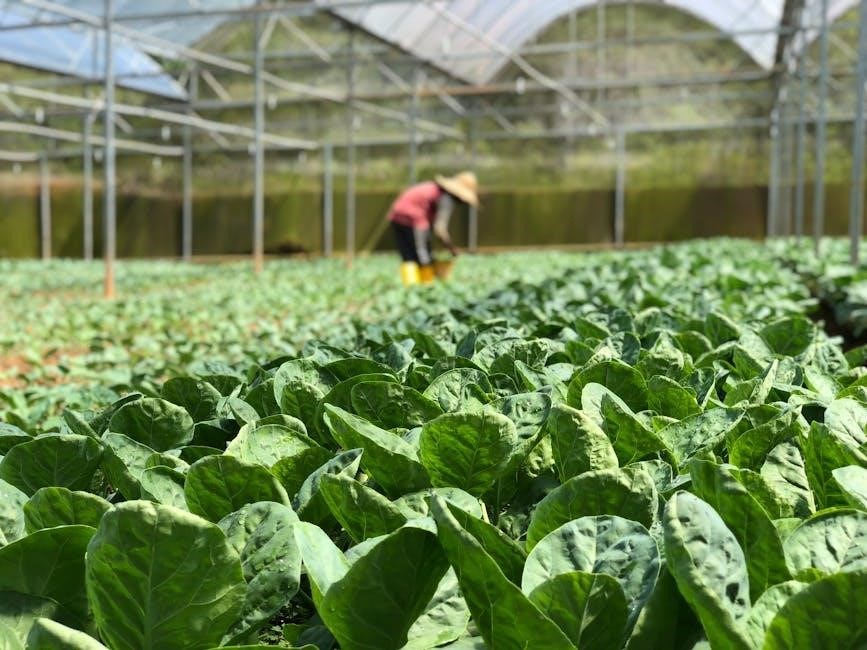
Advantages of Hydroponic Growing
Hydroponic growing offers significant yield increases, water efficiency, and space-saving benefits․ It enables year-round cultivation and faster growth rates, making it a highly effective method for cannabis cultivation․
Massive Yields and Faster Growth Rates
Hydroponic growing delivers exceptional yields and accelerates plant development due to direct nutrient absorption․ Plants thrive in nutrient-rich water solutions, achieving 20-30% higher yields compared to soil-based methods․ This efficient system bypasses the need for extensive root expansion, allowing energy to focus on growth and bud production․ The result is faster vegetative and flowering stages, leading to shorter growth cycles and bountiful harvests․
Water Efficiency and Space-Saving
Hydroponic systems are highly water-efficient, using up to 90% less water than traditional cultivation methods․ By recirculating nutrient-rich solutions, water waste is minimized․ Additionally, hydroponics requires less space, as roots don’t need to expand extensively through soil․ This compact setup is ideal for indoor grows, allowing growers to maximize yields in limited areas while maintaining environmental sustainability and reducing water consumption significantly․
Year-Round Growing Potential
Hydroponic marijuana growing allows for year-round cultivation by controlling environmental conditions․ Indoors, growers can replicate optimal seasons regardless of external weather, ensuring consistent results․ Using LED grow lights and precise temperature management, plants thrive in any climate․ This method eliminates seasonal dependencies, enabling multiple harvests annually and maximizing yields without interruptions․ The ability to grow year-round makes hydroponics a highly efficient and productive choice for cannabis cultivation․
Increased Potency of the Final Product
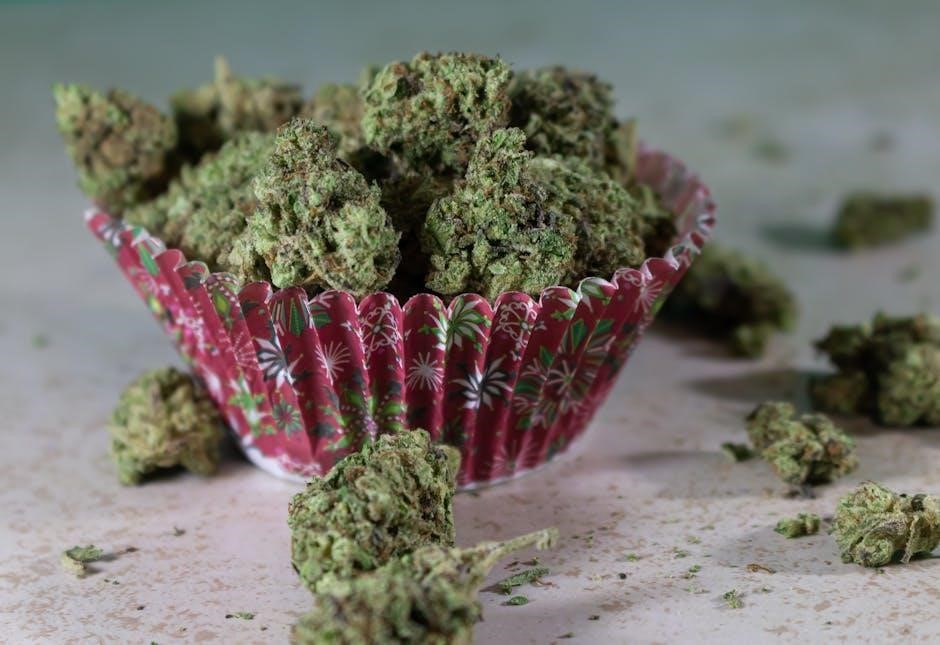
Hydroponic marijuana growing often results in higher potency due to precise nutrient delivery and optimal growing conditions․ Plants receive exactly what they need, leading to increased cannabinoid and terpene production․ This direct nutrient absorption enhances bud quality, resulting in more potent flowers compared to traditional soil-based methods․ The controlled environment ensures consistency, further elevating the final product’s strength and flavor profile․

Pros and Cons of Hydroponic Cannabis Cultivation
Hydroponic cannabis cultivation offers faster growth and higher yields but requires precise nutrient management and initial investment․ It balances improved efficiency with increased maintenance demands effectively․
Pros: Enhanced Nutrient Delivery and Plant Health
Hydroponic systems deliver nutrients directly to roots, ensuring optimal absorption and promoting robust plant health․ This method maximizes nutrient efficiency, leading to faster growth and increased potency․ Plants thrive in a controlled environment with consistent access to oxygen, water, and minerals, resulting in healthier growth and higher yields compared to traditional soil-based cultivation․ The direct nutrient uptake reduces waste and enhances overall plant vigor, making hydroponics highly effective for cannabis cultivation․
Cons: Higher Maintenance and Initial Investment
Hydroponic systems require consistent monitoring of pH levels, nutrient balance, and equipment maintenance, increasing the workload․ The initial setup involves significant costs for specialized gear like pumps, reservoirs, and grow lights․ Additionally, the precise control needed for optimal growth demands regular adjustments, making it less suitable for low-effort cultivation․ These factors can deter growers seeking simpler, more traditional methods, despite the potential for higher yields and potency․

Essential Equipment for Hydroponic Setup
A hydroponic setup requires a growing system, grow lights, ventilation, pH meter, reservoir, pump, air stone, and high-quality nutrient solutions to ensure optimal plant growth and health․
Hydroponic Growing Systems (DWC, NFT, etc․)
Hydroponic growing systems like Deep Water Culture (DWC) and Nutrient Film Technique (NFT) are popular for marijuana cultivation․ DWC systems use a reservoir where roots float in oxygen-rich water, promoting healthy root development and robust plant growth․ NFT systems deliver a continuous flow of nutrient solutions to plants, ensuring consistent nourishment․ Both methods offer excellent control over nutrient delivery, leading to faster growth and higher yields compared to soil-based methods․
Grow Lights and Ventilation Systems
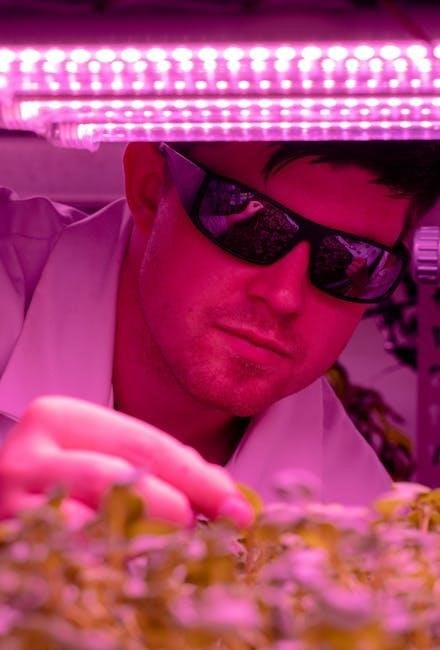
Grow lights are essential for hydroponic setups, providing the necessary spectrum and intensity for plant growth․ LED grow lights are popular due to their energy efficiency and minimal heat output․ Proper ventilation systems, including fans and carbon filters, maintain optimal temperature, humidity, and air circulation․ This ensures healthy plant development and prevents mold growth, creating a balanced environment for thriving hydroponic marijuana plants․
pH Meter and Nutrient Solutions
A pH meter is crucial for monitoring the acidity levels in hydroponic systems, ensuring optimal nutrient absorption․ The ideal pH range for cannabis is 5․5–6․5․ Nutrient solutions provide essential macronutrients (N, P, K) and micronutrients (Fe, Zn, etc․)․ Properly balanced solutions promote healthy plant growth․ Regular pH adjustments using pH-up or pH-down solutions maintain stability, preventing nutrient deficiencies and ensuring plants thrive in the hydroponic environment․
Reservoir, Pump, and Air Stone
The reservoir holds the nutrient-rich water solution, serving as the heart of the hydroponic system․ A pump circulates oxygenated water to the plants, ensuring consistent nutrient delivery․ The air stone aerates the solution, providing essential oxygen to roots․ Proper setup and maintenance of these components are vital for healthy plant growth and preventing root rot in a hydroponic marijuana setup․
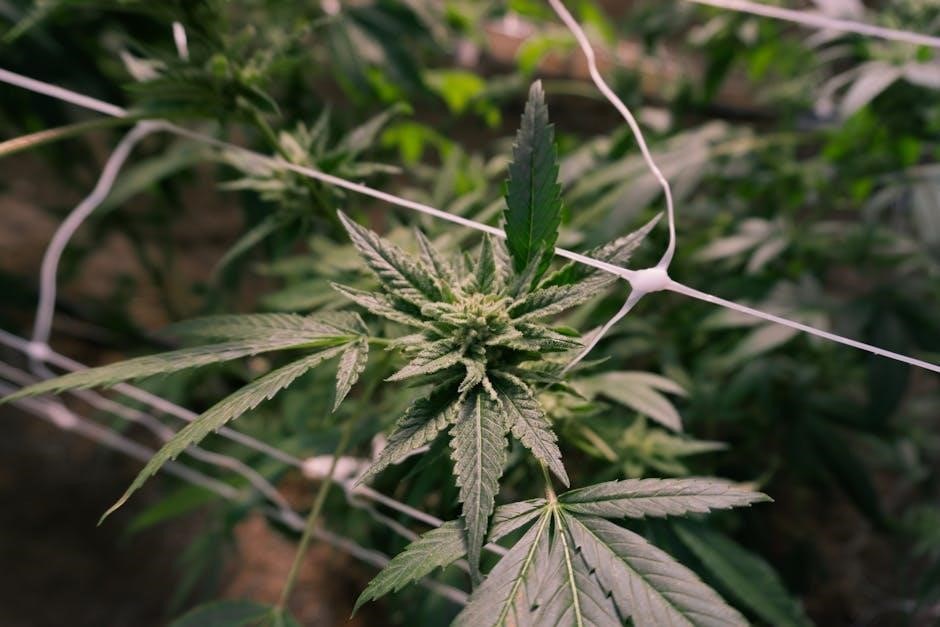
Understanding pH Levels in Hydroponics
pH levels are crucial in hydroponics, as they determine nutrient availability․ The optimal range for cannabis is typically between 5․5 and 6․5, ensuring roots absorb essential nutrients effectively․
Optimal pH Range for Cannabis Growth
The optimal pH range for cannabis growth in hydroponics is between 5․5 and 6․5․ This range ensures proper nutrient absorption, as cannabis roots thrive in slightly acidic conditions․ A pH outside this range can lead to nutrient deficiencies, stunted growth, or root damage․ Regular monitoring and adjustments are essential to maintain this balance, directly impacting plant health and overall yield․
How to Monitor and Adjust pH Levels
Regularly test the pH using a digital meter to ensure it stays within the optimal range of 5․5-6․5․ Adjust levels by adding pH balancers or water․ Overfeeding can cause imbalances, so monitor during feeding․ Maintain consistency to prevent stress, as fluctuations can harm root function․ Adjustments are simpler in hydroponics than soil, allowing quick corrections for healthy plant growth and nutrient uptake․
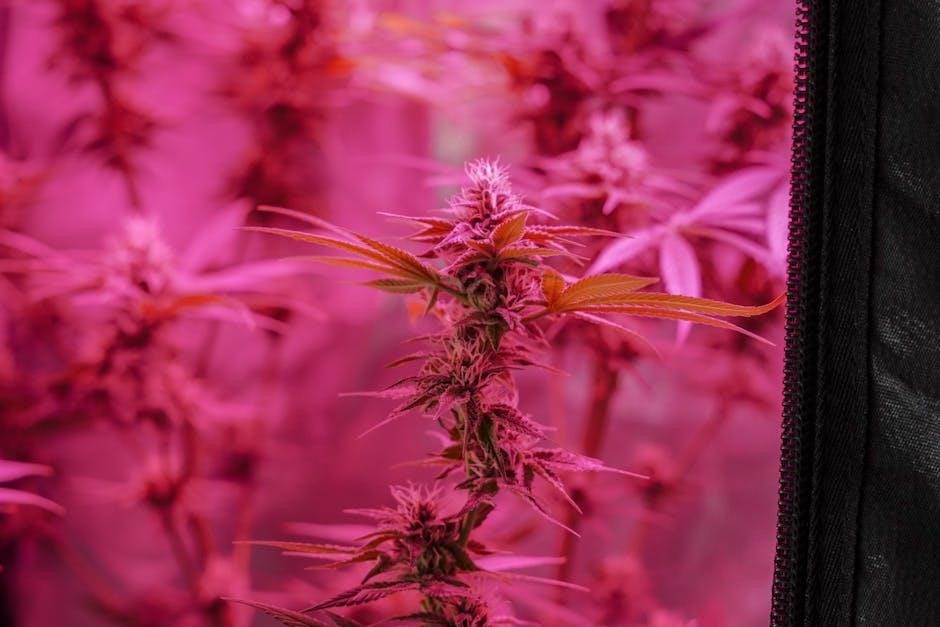
Nutrient Management in Hydroponic Systems
Balanced nutrient solutions, including macronutrients (N, P, K) and micronutrients (Fe, Zn, Mn), are crucial for healthy plant growth․ Monitor levels to prevent overfeeding and ensure optimal absorption․
Macronutrients and Micronutrients for Cannabis
Macronutrients and Micronutrients for Cannabis
Cannabis requires essential macronutrients like nitrogen (N), phosphorus (P), and potassium (K) for growth, while micronutrients such as iron (Fe), zinc (Zn), and manganese (Mn) support enzyme function and chlorophyll production․ These nutrients must be balanced in hydroponic solutions to prevent deficiencies and promote healthy plant development․ Proper ratios ensure optimal nutrient absorption, avoiding overfeeding and maintaining plant health throughout the growth cycle․ Regular monitoring guarantees the right levels for each stage․
Nutrient Schedules for Different Growth Stages
Nutrient schedules must be tailored to cannabis growth stages․ During germination, minimal nutrients are needed, while seedlings require balanced formulas․ In the vegetative stage, higher nitrogen levels promote leaf growth, while flowering demands increased phosphorus and potassium for bud development․ Adjusting nutrient ratios ensures optimal growth and prevents deficiencies․ Regular monitoring and gradual increases in nutrient strength support healthy plant development throughout the cycle․
The Growing Process: From Germination to Harvest
Hydroponic marijuana growing progresses through germination, seedling care, vegetative growth, flowering, and harvesting․ Each stage requires precise nutrient, light, and environmental adjustments to maximize yields and quality․
Germination and Seedling Care
Germination in hydroponic systems often begins with seeds placed in starter pods or net pots filled with inert media like rock wool․ Seedlings require consistent moisture, so hand watering is recommended until roots establish․ Once transplanted, a pump and timer distribute oxygenated water to the roots․ Maintaining a clean, controlled environment is crucial during this delicate stage․ Proper humidity and temperature control ensure healthy development, setting the foundation for robust growth and high yields․
Vegetative and Flowering Stages
During the vegetative stage, cannabis plants focus on leaf growth and structure․ Hydroponic systems provide consistent nutrients, with higher nitrogen levels promoting healthy foliage․ Once plants reach maturity, the flowering stage begins, typically triggered by adjusting light cycles to 12/12․ Nutrient profiles shift to favor phosphorus for bud development․ Monitoring and adjusting pH, oxygen levels, and light intensity ensures optimal growth and maximizes bud production in both stages․
Harvesting and Drying Techniques
Harvesting hydroponic marijuana involves cutting plants at peak ripeness, typically when trichomes are milky or amber․ Post-harvest, buds are carefully trimmed to remove excess foliage․ Drying is done in a controlled, low-humidity environment to prevent mold and preserve potency․ Proper curing in airtight containers enhances flavor and aroma, ensuring a high-quality final product with optimal cannabinoid retention․
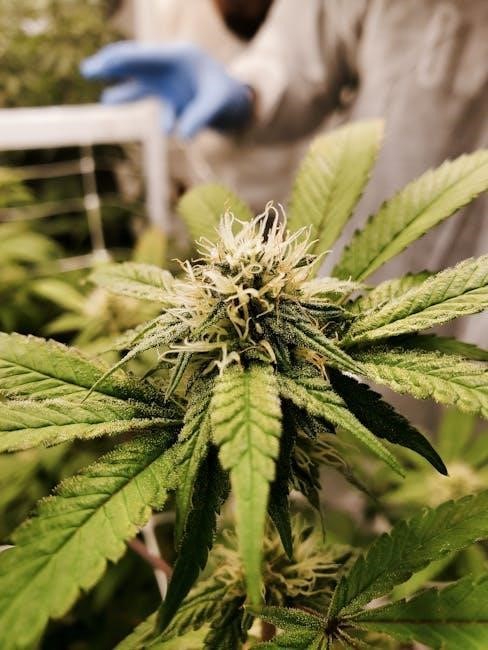
Environmental Control in Hydroponic Growing
Precise control of temperature, humidity, and lighting is crucial for optimal growth․ Maintain temperatures between 70-85°F, humidity at 40-70%, and ensure proper lighting cycles for vegetative and flowering stages․
Lighting and Temperature Management
Proper lighting and temperature control are vital for hydroponic marijuana growth․ LED grow lights are ideal, providing intense light for photosynthesis․ Maintain temperatures between 70-85°F during the day and slightly cooler at night․ Adjust light cycles to 18-24 hours for vegetative growth and 12 hours for flowering․ Ensure good air circulation to prevent overheating, which can stress plants․ Monitoring these factors ensures optimal conditions for healthy growth and maximizes yields․ Consistency is key for thriving plants․
Humidity and Air Circulation
Maintaining optimal humidity and air circulation is crucial for hydroponic marijuana growth․ Young plants thrive in higher humidity (50-70%), while mature plants prefer lower levels (40-50%) to prevent mold․ Use fans and ventilation systems to ensure consistent air flow, which promotes healthy root development and prevents fungal diseases․ Proper circulation also helps regulate temperature and ensures even oxygen distribution, supporting robust plant growth and bud development throughout the growing cycle․
Best Strains for Hydroponic Growing
Strains like Glookies and Coughy excel in hydroponic systems due to their robust growth and high yield potential, making them ideal choices for hydroponic marijuana cultivation setups․
Strain Selection for Optimal Yields
Selecting the right strain is crucial for maximizing yields in hydroponic setups․ Strains like Glookies and Coughy are highly recommended due to their robust growth and high yield potential․ These strains thrive in hydroponic systems, responding well to nutrient-rich environments and controlled conditions․ They are bred to produce dense, resinous buds, making them ideal for growers aiming for both quantity and quality․ Proper genetics ensure optimal performance and potency in hydroponic cultivation․
Genetic Factors Influencing Hydroponic Growth
Genetics play a pivotal role in hydroponic growth, as certain strains are bred to thrive in nutrient-rich environments․ Strains with compact growth patterns and high nutrient efficiency tend to perform exceptionally well․ Autoflowering varieties, for instance, are ideal due to their fast growth cycles and robust health․ Selecting strains with naturally high yields and resilience ensures optimal results in hydroponic systems, where direct nutrient access amplifies genetic potential․